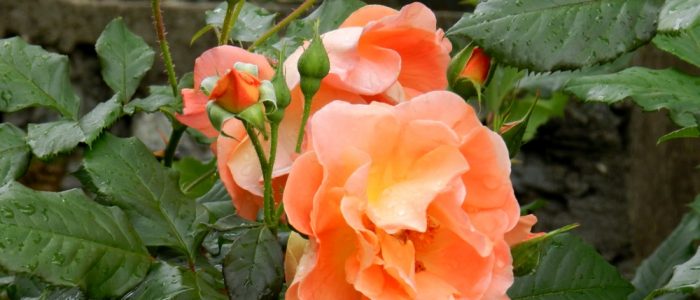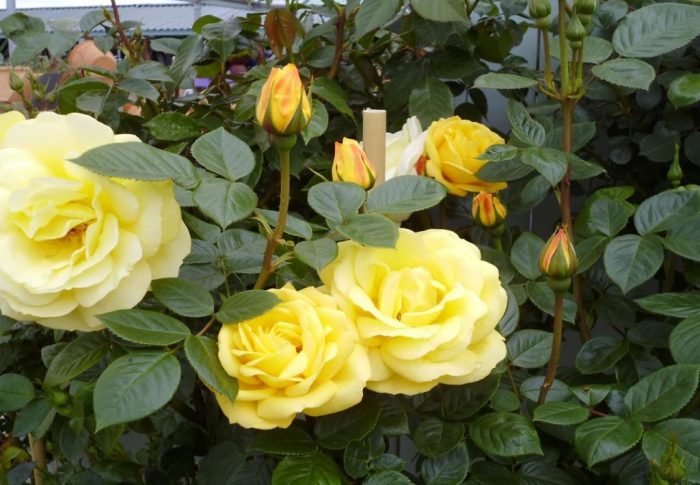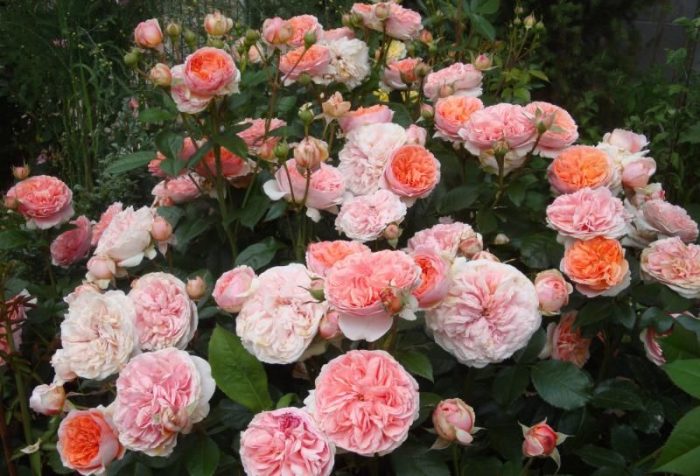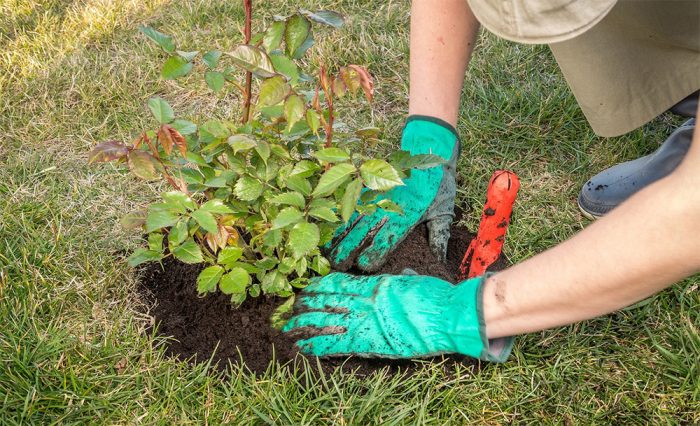Content:
Due to the pronounced continental climate, almost all regions of Siberia are characterized by harsh conditions, which, at first glance, are not at all suitable for growing garden roses. Despite the frosty winter and late spring, many varieties and hybrids still managed to master this territory.
Winter-hardy varieties for the Siberian region
The most hardy varieties of roses grafted onto rose hips have proven themselves. And the characteristics of the scion meet rather stringent requirements. However, due to the abundance of varieties on the market, it is difficult to decide which roses are the most unpretentious and winter-hardy for Siberia. They are protected from diseases by good immunity, and after being damaged by unexpected frosts, they are able to recover in a short time without much loss.
Winter hardiness of plants largely depends on:
- from correct and timely preparation for the cold season;
- arrangement of reliable shelters;
- regular use of fertilizers and dressings.
Growing and breeding roses in the Siberian region requires from gardeners not only great efforts, but also attention to the needs of a single plant. The best frost-resistant roses for Siberia:
- Chippendale is a vigorous scrub with salmon pink flowers.
- New Dawn - Sometimes classified as curly (rambler). Suitable for poor soils, grows in partial shade, high, shoot length up to 2 m.
- Golden Celebration is growing rapidly. Flowers are copper-yellow, densely double, 12-14 cm in size.
- Westerland - can be grown in bush or climbing form. The flowers are orange with a hint of apricot, gold and pink. The bush is wide (up to 1.5 m).
- Rosarium Uthersen - shaped like a climber or scrub. Huge pink flowers are collected in brushes. Plant height reaches 3.5 m.
The best varieties of floribunda roses for Siberia are Arthur Bell (looks great in group plantings), Deja Vu (flowers are suitable for cutting), Sunsprite (high frost resistance, resistance against most diseases, grows on poor soils).
The seeds of the Siberian rose Kalistegiya are also quite in demand. This vine blooms in the first year after planting. Calistegia's buds appear in each leaf axil.
Growing climbing and park roses in Siberia
Even before planting, you need to find a suitable place for the plants. In order for roses to be able to fully demonstrate all their beauty, experienced gardeners recommend following simple rules:
- it is necessary to choose a place on the southern side of the site, on which in the hot midday time there will be a shadow from neighboring trees or bushes;
- the rose garden should be located on a small hill - in spring the soil thaws and dries up faster, the roots of plants will not suffer from cold and excess moisture;
- they begin to plant roses in open ground in May, when the air temperature no longer drops below + 10 ° C (from May 15 to June 15, those planted later may not have time to ripen and die in winter).
All ramblers and climbers are quite hardy and unpretentious, capable of wintering without losses in harsh conditions. Ground cover roses of Kordes firm - "Diamant", "Knirps", have proven themselves to be excellent.Own-rooted seedlings grown in Siberian nurseries are especially good. They are easy to save in winter. Even beginners will find it easy to grow roses with flexible stems up to 5 m. They are twisted around a support. During flowering, top dressing is not done, they are limited to timely watering. The best varieties are "Excels", "Dorothy Perkins".
Modern park roses are called scrubs. This is a Scottish rose, "Spring gold". It is not so easy to bend the two-meter shoots of the climbers. To stimulate the growth of peduncles, they are placed in a fan on trellises or fences. The varieties "Elf", "Pink Cloud", "Rosanna" are especially pleasing.
How to propagate roses in Siberia
The most reliable method of growing roses is considered to be cuttings. Novice gardeners can also master this method.
After the snow cover has melted, cuttings are cut from the most frost-resistant mother bush - 10-15 cm long stems with buds. The thin upper part is not used.
They are planted in loose soil, covered with plastic bottles. If the air temperature in such a shelter rises strongly, the plug is unscrewed and ventilated. Rooted plants are fully opened and transplanted two months after the first leaves appear.
Features of planting roses in Siberia
Well-mixed components are placed in a planting pit measuring 50 × 50 × 50 cm:
- wood ash (400 g);
- weathered clay (1 part);
- peat (2 parts);
- humus (3 parts);
- river sand (1 part).
The soil layer removed during the preparation of the pit is also mixed with the resulting composition, superphosphate (300 g) is added, a little potassium sulfate (30 g).
In seedlings, the root length is left equal to 20 cm, the excess areas are cut off and placed in a growth stimulator solution for 4 hours. Then they are planted, watered with warm water and spud.
Features of caring for roses in Siberia
The plants are watered once a week, but enough so that the soil is saturated to a depth of about 25 cm. Thus, the growth of surface roots is stopped.
In the spring, formative pruning is performed and damaged areas and stems are removed. For spring feeding, it is advisable to use rotted horse manure, which does not acidify the soil.
In the middle of summer, watering is sharply reduced, fertilization is stopped in order to save the plants from the effects of low temperatures. Preparation for winter begins.
Shelter roses for the winter in Siberia
In order for the bushes not to suffer from frost, you need to know how to preserve garden roses in winter in Siberia. Preparation for the winter period is to ensure that the plants are fully strengthened. Therefore, they are properly watered and fed throughout the first half of the summer. The most delicate upper parts of the shoots are cut in advance, the cuts are smeared with garden varnish to avoid infection.
They are sheltered in dry weather, after the first frost. Remove from supports and carefully place on the ground. If the climber rose and its thick stems are difficult to bend, you can leave them slightly above the soil level. Then the whole bush is covered with non-woven material folded in several layers and fixed on the sides. So the roses will be able to winter.
Sometimes the bushes are dug up, they can be stored in the basement or cellar during the winter.
How else can you cover park roses:
- A frame of intersecting arcs is installed over the plant, which is half-sprinkled with a light mixture of leaves and soil. First, a double layer of covering material is applied to the arcs, and then the film.
- "House". Two pieces of polycarbonate of equal size are placed over the bush and fastened at the top. Covering with lutrasil and film is carried out. They are finally closed only after the onset of cold weather.
- If the winters are snowy, then the bushes of low roses are simply covered with snow. Plants covered in this way will survive well until spring.
- If there are mice on the site, then the roses are sprinkled high and covered with spruce branches. Cover the top with plastic buckets or boxes.
The cultivation of roses in Siberia is quite possible, and with the gradual observance of all the rules, caring for them is not laborious. But every year, the preserved bushes, decorated with flowers of incredible beauty, surprise not only the owners of the garden plots, but also make a huge impression on their guests and relatives.

















